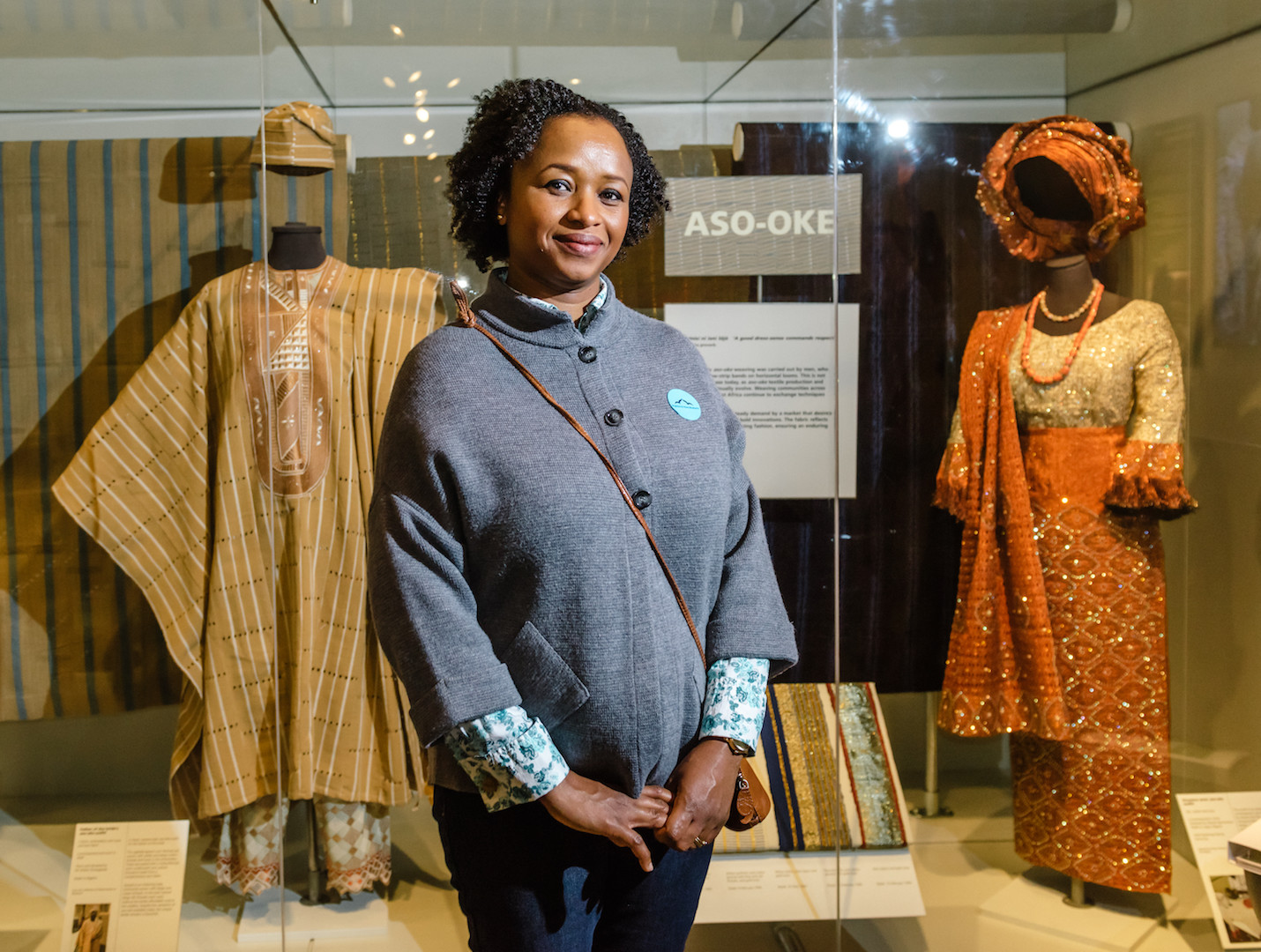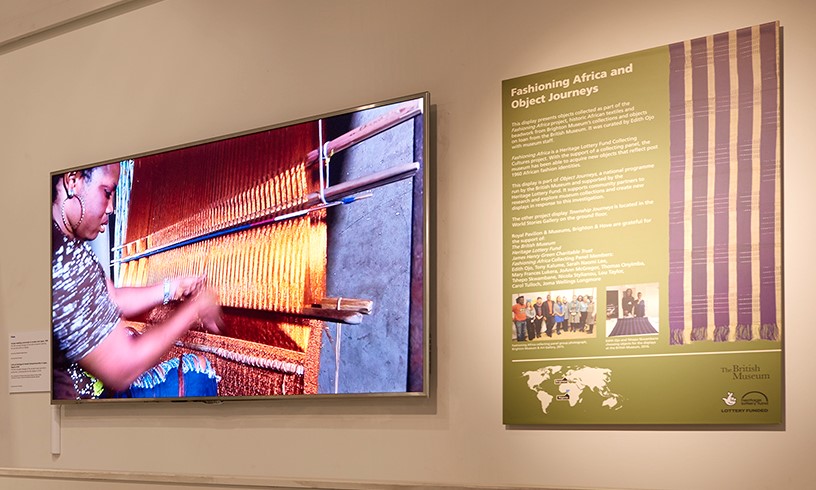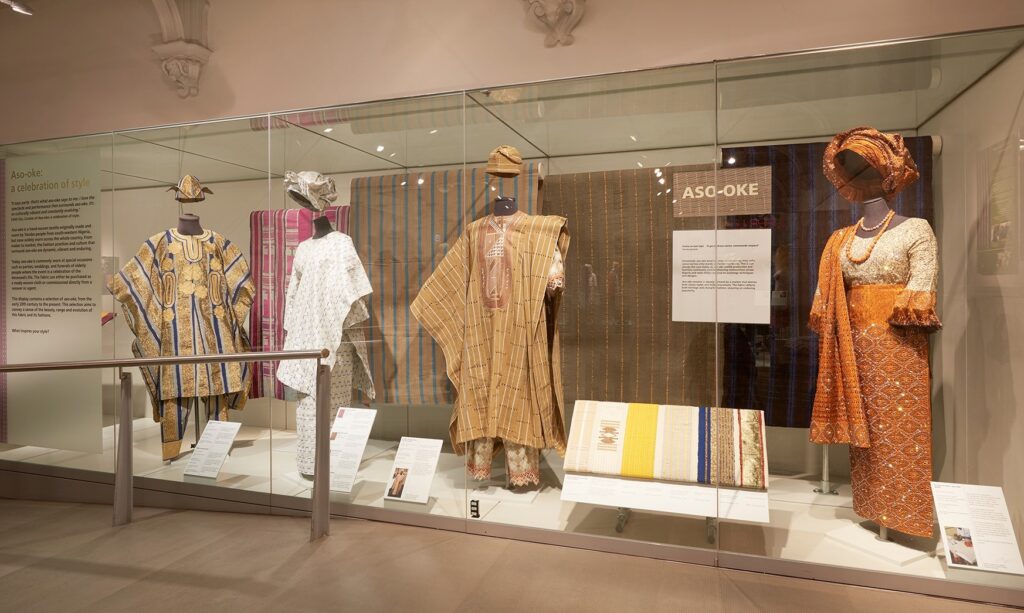Display at Brighton Museum & Art Gallery, 2018-19
This display explored aso-oke, a classic and enduring textile and style phenomena in Nigeria. It featured textiles and garments collected as part of the Fashioning Africa project, and historic African objects on loan from the British Museum.
Curated by Edith Ojo with museum staff.

Object Journeys, Aso-oke: A celebration of style 2018.
‘It says party, that’s what aso-oke says to me. I love the spectacle and performance that surrounds aso-oke. It’s so culturally vibrant and constantly evolving.’
Edith Ojo, Curator
Aso-oke is a hand-woven textile originally made and worn by Yoruba people from south-western Nigeria, but now widely worn across the whole country. From maker to market, the fashion practices and culture that surround aso-oke are dynamic, vibrant and enduring.
Historically aso-oke weaving was carried out by men, who wove narrow-strip bands on horizontal looms. This is not always the case today, as aso-oke textile production and fashions continually evolve. Weaving communities across Nigeria and west Africa continue to exchange techniques and designs.
Today aso-oke is commonly worn at special occasions such as parties, weddings, and funerals of elderly people where the event is a celebration of the deceased’s life. The fabric can either be purchased as a ready-woven cloth or commissioned directly from a weaver or agent.
Aso-oke remains in steady demand by a market that desires both classic styles and bold innovations. The fabric reflects both heritage and changing fashion, ensuring an enduring popularity.
The display featured a selection of aso-oke, from the early 20th century to the present. The selection aimed to convey a sense of the beauty, range and evolution of this fabric and its fashions.
Ìrínisí ni ìsni lójò ‘A good dress-sense commands respect’ Yoruba proverb
This film features Edith Ojo talking about the display, and a demonstration of how to put on a women’s aso-oke outfit and how to tie a gele headwrap.

